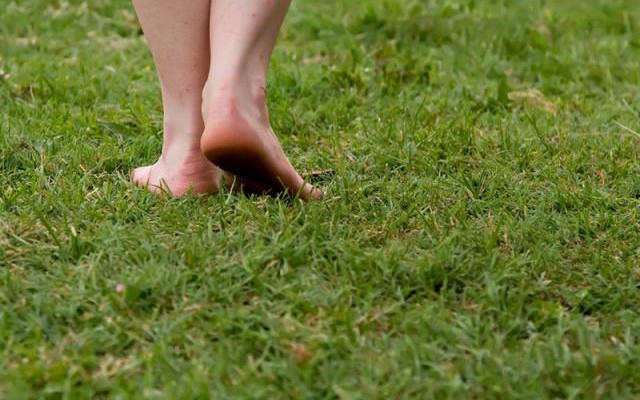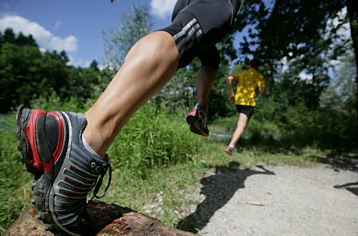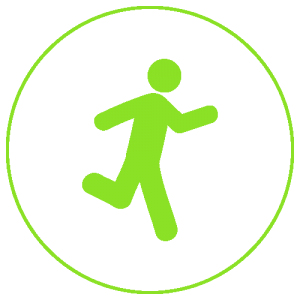
Monday 21 August 2017
Run barefoot, and therefore in the most natural way possible, or protect yourself with sports shoes to avoid any kind of risk?
Does running barefoot deprive you of the elastic rebound provided by shoes? These and many other issues should be addressed in order to answer the question. To do so, we consulted two foot experts that I coach and with whom I share studies on the topic. The kinesiologists Daniele De Pasquale and Marco Giambastiani tell us their opinions. I find their testimony extremely useful because as athletes, they have a thorough understanding of what it means to run.
But first, a few words about feet.
The foot
The foot is at the bottom of the human body’s leg and is a very important anatomical structure, since every action generated by movements and sports activities act directly on it. The foot consists of 26 bones (this number can vary from person to person in consideration of the possible presence of sesamoid or accessory bones) which are usually divided into:
Tarsus, which constitutes the back of the foot and helps form the skeleton of the ankle and heel. The foot has two rows of bones: the proximal row formed by the talus and calcaneus, and the distal row formed by the three cuneiform bones, the cuboid bone and navicular bone.
Metatarsal, which constitutes the front half of the foot and is formed by five metatarsal bones that act as an intermediary between the tarsus and the phalanges of the toes.
Phalanges, which are 14 small bones.
All the toes are formed of three phalanges aside from the big toe, which has only two. All the foot’s bones have a coating of cartilage which is elastic but also durable and allows the bones to slide within the joints. The upper part of the foot is called the instep, and the bottom is the plantar.
There are various diseases which affect the foot, the most common being bunions, which are a deformation of the articulation of the big toe, and flat foot, which is a reduction in the plantar arch.
Fun fact
In the 1960 Summer Olympics held in Rome, Abebe Bikila ran the entire marathon barefoot and won the gold medal.
His coach had agreed to this technical choice. In 1964 he was again successful, this time running with shoes.
8 questions for the expert (Dr. De Pasquale)
Why do you run barefoot?
Basically because I was always searching for a shoe that gave my feet more freedom. The shoes were always too high or too tight and I began to “take them off” more and more, and after 4/5 years I was always running barefoot.
Do you always run barefoot when training?
Now I do, but it was a gradual transition. I always run the same path on asphalt; I wear leather FiveFingers when I’m away from home.
What do you lose in terms of performance?
I actually have improved performance when running under 10 km, but I initially lost it because I had to reset the way I ran. In my opinion, the energy expenditure necessary for running barefoot up to 10 km is negligible. On longer routes there is a loss in terms of time, as running barefoot requires more energy.
Are there any additional effects after running barefoot during training or a race?
I feel much better. While running I can feel my calf muscles working a lot, I have to put in more effort and I feel more fatigue; even if I run slowly my muscles are working hard, but once I have finished the workout or race I don’t feel any pain at all.
Can everyone run barefoot?
It depends on what kind of life the runner has had, his or her experience in sports and if he or she has had any signficant trauma.
Do you recommend working out with FiveFingers shoes to the athletes you treat?
Only occasionally to those who don’t have any problems and have adapted to using their feet over time. It helps their feet rediscover their natural state.
Do you have any advice for runners?
I recommend minimalist shoes to everyone, no platforms of any kind on the feet.
One last note?
We should devote no more than 30 minutes per day to running: this amount of time would be perfect.
If we want to achieve greater things, we must attain them with the continuous lengthening of our postural chains. I run long distances such as marathons, but I am well aware that to do so and be comfortable I must devote ample time to my body.
Running: with what type of shoes? Is barefoot better? (Dr Marco Giambastiani)
Before presenting my opinion on such a fascinating subject I would like to make a premise: as a kinesiologist who specifically deals with postural alignment, I would like to sound an alarm about the FEET for all runners and other athletes.
Everyday I treat athletes, runners, triathletes, etc. who are unable to perform simple movements such as flexing their toes, flexing and extending their ankle joint and other simple movements without getting very strong cramps.
It seems to me that the average athlete is much more focused on what type of shoe to buy (and with this come the most varying recommendations, even from those who don’t have the slightest idea how the foot is structured and what functions it carries out), and not on the health of their feet.
What we carelessly ignore is the part of the body that allows us to walk, run and orient ourselves in space; it continually sends signals to the tonic-postural system and lastly, adapts to muscular tensions coming from the upper body. It is the only body part that keeps us almost constantly in contact with our planet!!
Logically, the health of the foot plays a key role in running. It is made of muscles, and these muscles must extend for their own health and efficiency.
So let’s think of the foot as a part of the body to look after, making it sensitive (proprioception: the more sensitive a foot, the better your running mechanics will be) by stretching the various flexor and extensor muscles (an elastic foot gives us a major boost and prevents tendon injuries by providing improved cushioning).
Read more







